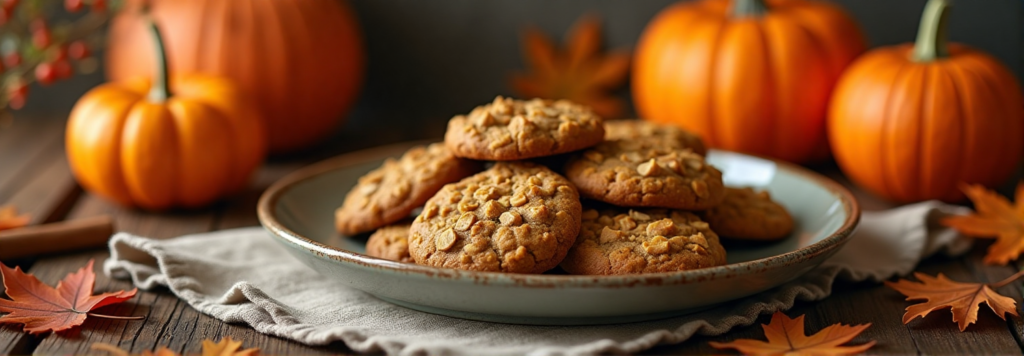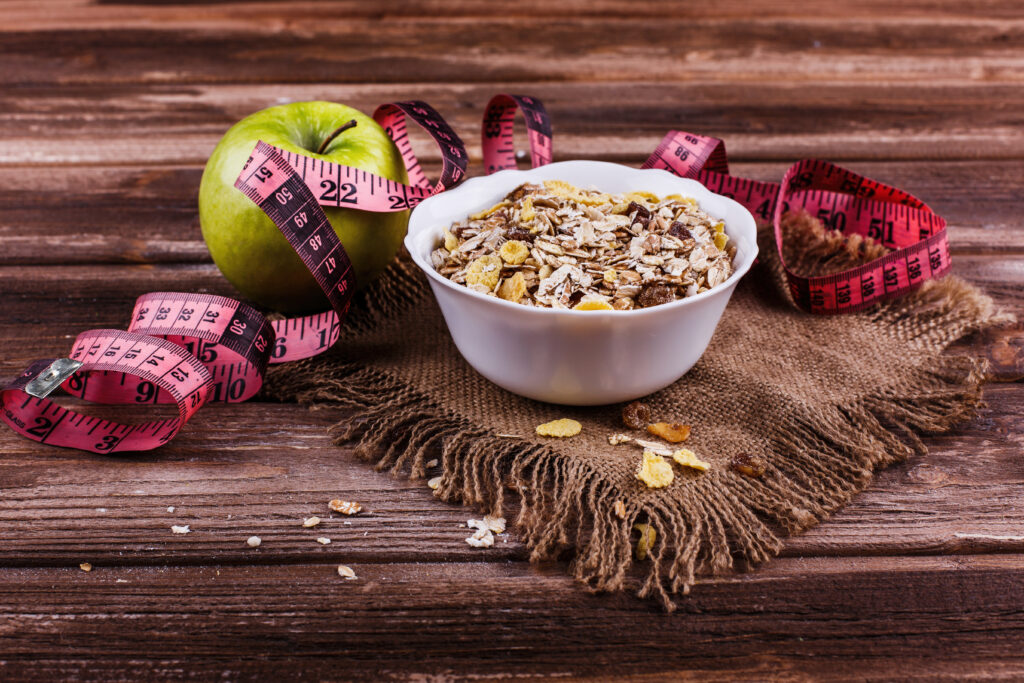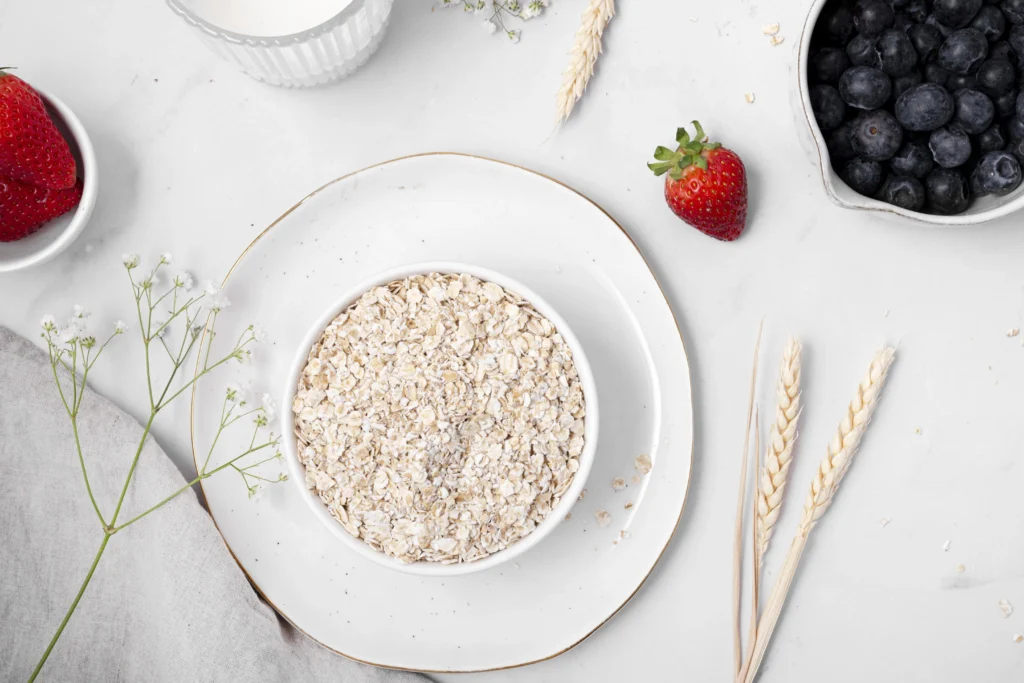
Introduction
When autumn arrives, so does the craving for warm, spiced treats that capture the season’s essence. Among the most beloved fall desserts, pumpkin oatmeal cookies hold a special place. These cookies combine the comforting flavors of pumpkin, cinnamon, and nutmeg with the hearty texture of rolled oats, creating a treat that’s both satisfying and nostalgic. Whether you’re baking for a cozy night in or sharing with friends, these cookies are sure to impress.
For more insights into the nutritional value of oats, check out the health benefits of oats and oatmeal.
In this article, we’ll explore everything you need to know about pumpkin oatmeal cookies, from their ingredients to creative variations and storage tips. Whether you’re an experienced baker or a novice, these tips will help you craft the perfect batch every time.
Why Pumpkin Oatmeal Cookies are a Must-Try Dessert
Pumpkin oatmeal cookies are more than just a dessert—they’re a celebration of fall in every bite. Their unique combination of ingredients makes them a versatile and nutritious treat, appealing to both health-conscious snackers and indulgent dessert lovers alike. Let’s dive into what makes these cookies so special.

The Allure of Pumpkin in Baking
Pumpkin is a star ingredient in fall baking, beloved for its subtle sweetness, creamy texture, and ability to pair beautifully with warm spices like cinnamon, nutmeg, and cloves. In cookies, pumpkin adds moisture, giving them a soft and chewy texture. It’s also packed with vitamins A and C, adding a hint of nutrition to your indulgence.
Health Benefits of Oats in Cookies
Oats are a powerhouse ingredient, known for their high fiber content and heart-health benefits. When used in cookies, rolled oats create a delightful chewiness while balancing the richness of butter or oil. They also have a natural nutty flavor that complements pumpkin perfectly, making them an essential component of this recipe.Oats are a powerhouse ingredient, known for their fiber content and heart-health benefits. To learn more about how oats contribute to weight management, explore oatmeal for weight loss.
Combining Pumpkin and Oats for a Unique Flavor
When pumpkin meets oats, the result is a cookie with a perfectly balanced flavor profile. The pumpkin brings sweetness and warmth, while the oats provide texture and a mild earthiness. This pairing is enhanced with spices and add-ins like chocolate chips or raisins, creating a cookie that feels like a warm hug on a chilly day.
Essential Ingredients for Pumpkin Oatmeal Cookies
Making the perfect pumpkin oatmeal cookies starts with gathering the right ingredients. Here’s a breakdown of what you’ll need and why each ingredient is crucial to the recipe.
Key Ingredients: Pumpkin Purée and Rolled Oats
- Pumpkin Purée: The backbone of these cookies, pumpkin purée gives them their signature flavor and soft texture. Make sure to use canned pumpkin purée, not pumpkin pie filling, as the latter contains added sugars and spices.
- Rolled Oats: Old-fashioned rolled oats provide structure and chewiness to the cookies. Quick oats can work in a pinch but may result in a softer texture.

Supporting Ingredients: Spices, Sweeteners, and Add-ins
- Spices: Warm spices like cinnamon, nutmeg, cloves, and ginger create the cozy fall flavor we associate with pumpkin treats.
- Sweeteners: Brown sugar is ideal for these cookies, adding moisture and a caramel-like richness. Granulated sugar can be used for additional sweetness.
- Butter or Oil: Butter gives the cookies a rich flavor, while vegetable oil provides a dairy-free alternative.
- Flour: All-purpose flour acts as the binding agent, holding all the ingredients together.
Popular Add-ins: Chocolate Chips, Nuts, and Raisins
- Chocolate Chips: These add a touch of indulgence. Semi-sweet or dark chocolate chips work particularly well.
- Nuts: Chopped pecans or walnuts introduce a crunchy contrast to the chewy texture.
- Raisins or Dried Cranberries: For a fruity twist, raisins or cranberries can be added to enhance the flavor and texture.
How to Make the Best Pumpkin Oatmeal Cookies
Crafting the perfect pumpkin oatmeal cookies involves more than just mixing ingredients—it’s about balancing flavors and textures for a treat that feels both indulgent and comforting. Here’s a detailed guide to making these cookies step by step, along with tips to ensure success every time.
Step-by-Step Recipe Guide
Preparing the Cookie Dough
- Mix the Dry Ingredients: In a large bowl, whisk together the all-purpose flour, baking soda, baking powder, salt, and spices (cinnamon, nutmeg, ginger, and cloves). This ensures the spices are evenly distributed throughout the dough.
- Cream the Wet Ingredients: In another bowl, beat softened butter (or oil for a vegan alternative) with brown sugar and granulated sugar until creamy. Add the pumpkin purée, vanilla extract, and an egg (or flaxseed egg for a vegan option) to the mixture, blending until smooth.
- Combine the Wet and Dry Ingredients: Gradually mix the dry ingredients into the wet mixture. Stir until just combined—overmixing can lead to tougher cookies.
- Fold in the Oats and Add-ins: Gently fold in rolled oats and your preferred add-ins, such as chocolate chips, chopped nuts, or raisins.
For more ways to enjoy oatmeal-based treats, consider eating oatmeal three times a day to lose weight.
Chilling the Dough
For optimal results, refrigerate the dough for at least 30 minutes before baking. Chilling firms up the dough, preventing the cookies from spreading too much and helping them maintain their chewy texture.
Baking Tips for Perfect Results
- Preheat the Oven: Set your oven to 350°F (175°C) and line baking sheets with parchment paper to prevent sticking.
- Portion the Dough: Use a cookie scoop or spoon to drop evenly sized portions of dough onto the baking sheet, leaving about 2 inches between each cookie to allow for spreading.
- Bake Until Golden: Bake for 10–12 minutes, or until the edges are lightly golden and the centers look slightly underbaked. Cookies continue to cook on the baking sheet after being removed from the oven.
- Cool Completely: Allow the cookies to cool on the baking sheet for 5 minutes before transferring them to a wire rack to cool completely. This step helps them firm up and enhances their texture.
Adjusting the Recipe for Dietary Needs
Pumpkin oatmeal cookies can be easily adapted for various dietary preferences, making them a versatile treat for everyone to enjoy.
Gluten-Free Pumpkin Oatmeal Cookies
- Substitute all-purpose flour with a gluten-free baking flour blend. Ensure the rolled oats you use are certified gluten-free to avoid cross-contamination.
- Follow the rest of the recipe as is, making no additional changes.
Vegan-Friendly Substitutions
Creative Variations of Pumpkin Oatmeal Cookies
While the classic pumpkin oatmeal cookie recipe is a crowd-pleaser, there are countless ways to add your own unique twist. By experimenting with textures, flavors, and even the shape of the cookies, you can create exciting variations to suit any occasion or taste preference. Here are some ideas to inspire your baking.

Pumpkin Oatmeal Bars
If you’re a fan of thicker, chewy desserts, turning your cookie dough into pumpkin oatmeal bars is an excellent option.
- How to Make Them: Instead of scooping the dough into individual cookies, press it evenly into a greased or parchment-lined 9×13-inch baking pan. Bake at 350°F (175°C) for 25–30 minutes, or until the edges are golden and a toothpick inserted into the center comes out clean.
- Why They’re Great: These bars are perfect for slicing into squares or rectangles, making them ideal for potlucks or on-the-go snacks.
Pumpkin Oatmeal Muffin Cookies
Muffin cookies are the perfect hybrid between soft muffins and chewy cookies.
- How to Achieve the Muffin-Like Texture: Add a bit more pumpkin purée to the dough (about 2–3 extra tablespoons) and a teaspoon of baking powder for a fluffier consistency. Scoop slightly larger portions of dough onto the baking sheet to create a puffed, muffin-like appearance.
- Add-Ins to Consider: Dried cranberries or white chocolate chips work exceptionally well in these.
Adding Seasonal Twists
Seasonal ingredients can transform your pumpkin oatmeal cookies into festive treats for holidays and gatherings.
- Cranberry and White Chocolate: For a Thanksgiving-inspired flavor, fold in dried cranberries and white chocolate chips. The tartness of the cranberries balances the sweetness of the chocolate.
- Caramel and Sea Salt: Drizzle caramel sauce over cooled cookies and sprinkle with a pinch of flaky sea salt for a decadent twist.
- Spiced Pumpkin Seed Topping: Garnish each cookie with roasted pumpkin seeds coated in cinnamon sugar before baking for added crunch and a seasonal touch.
Pumpkin Oatmeal Cookie Sandwiches
Turn your cookies into a delightful sandwich by filling them with cream cheese frosting or marshmallow fluff.
- How to Assemble: Once the cookies have completely cooled, spread a generous layer of filling on the bottom of one cookie, then press another cookie on top.
- Flavor Variations: For a fall-inspired filling, mix a teaspoon of maple syrup or pumpkin spice into the cream cheese frosting.
Pro Tips for Storing and Serving Pumpkin Oatmeal Cookies
To ensure your cookies stay fresh and maintain their delicious flavor, proper storage and serving techniques are essential. Follow these tips for the best results.
Best Ways to Store Fresh Cookies
- Room Temperature Storage: Store cookies in an airtight container at room temperature for up to 5 days. Place a slice of bread in the container to keep them soft—this trick helps maintain moisture.
- Refrigeration: For longer shelf life, refrigerate the cookies in a sealed container for up to 10 days. Bring them to room temperature before serving for the best taste.
- Freezing for Future Enjoyment: Pumpkin oatmeal cookies freeze beautifully. Layer them with parchment paper in a freezer-safe container or zip-top bag, and they’ll stay fresh for up to 3 months. To enjoy, thaw at room temperature or reheat gently in the oven for a freshly baked texture.
To enjoy a health-focused dessert that pairs well with fall treats, consider serving these cookies alongside a discussion about whether eating oatmeal every day is healthy.

Serving Suggestions and Pairings
- With Hot Beverages: These cookies pair wonderfully with a warm drink. Try serving them with spiced lattes, chai tea, or hot apple cider for the ultimate fall treat.
- As Dessert Accents: Crumble the cookies over a bowl of vanilla ice cream or use them as a base for a fall-inspired trifle layered with whipped cream and caramel sauce.
- On a Holiday Platter: Mix them with other seasonal treats like gingerbread cookies or snickerdoodles for an eye-catching holiday dessert display.
Frequently Asked Questions
Pumpkin oatmeal cookies are a delightful treat, but they might raise a few questions for first-time bakers. Here, we’ll address some common inquiries to help ensure your cookies turn out perfectly every time.
Can I use fresh pumpkin instead of pumpkin purée?
Yes, you can use fresh pumpkin instead of canned pumpkin purée, but it requires some preparation. To make your own pumpkin purée:
- Slice a small sugar pumpkin (also called pie pumpkin) in half and scoop out the seeds.
- Roast the halves in the oven at 400°F (200°C) until tender, about 40–50 minutes.
- Scoop out the flesh and blend it in a food processor until smooth.
- Strain the purée if it’s too watery, as excess moisture can affect the texture of your cookies.
How do I make my cookies soft and chewy?
To achieve soft and chewy cookies:
- Use the right ratio of wet to dry ingredients: Pumpkin adds moisture, so ensure the dough isn’t overly dry.
- Don’t overbake: Bake just until the edges are golden and the centers are set but slightly soft. Cookies will firm up as they cool.
- Chill the dough: This step keeps the dough firm, resulting in a denser, chewier texture.
What’s the best way to prevent cookies from spreading too much?
To avoid flat cookies:
- Chill the dough: Refrigerating the dough helps it hold its shape while baking.
- Use parchment paper: It provides a consistent baking surface. Avoid greasing the pan, as excess fat can cause spreading.
- Check your baking powder and soda: Expired leavening agents can lead to flatter cookies.
Can I freeze pumpkin oatmeal cookie dough?
Absolutely! Freezing the dough is a great way to prepare ahead:
- Scoop the dough into cookie-sized portions and place them on a baking sheet lined with parchment paper.
- Freeze until solid, then transfer the dough balls to a freezer-safe bag or container.
- Bake directly from frozen, adding 1–2 minutes to the baking time.
Are pumpkin oatmeal cookies healthy?
Pumpkin oatmeal cookies can be healthier than traditional cookies due to their ingredients:
- Pumpkin: Rich in vitamins A and C, as well as antioxidants.
- Oats: A great source of fiber and heart-healthy nutrients.
- Substitutions: Use whole wheat flour, reduce sugar, or incorporate natural sweeteners like maple syrup to make them even healthier.
How long can I store pumpkin oatmeal cookies?
Proper storage extends their shelf life:
- At room temperature, they last about 5 days in an airtight container.
- In the fridge, they stay fresh for up to 10 days.
- Frozen cookies can be enjoyed for up to 3 months.
Conclusion

Pumpkin oatmeal cookies are a timeless fall treat that combines the comforting flavors of pumpkin and spices with the hearty texture of oats. Whether you’re enjoying them on a crisp autumn day or sharing them with loved ones during the holidays, these cookies are sure to delight.
With their versatility, you can customize them to suit any occasion—make them gluten-free, vegan, or pack them with your favorite add-ins like chocolate chips, cranberries, or nuts. From classic round cookies to inventive bar or sandwich versions, the possibilities are endless.
By following the tips and variations shared in this guide, you’ll be well on your way to baking the perfect pumpkin oatmeal cookies every time. Whether you’re a seasoned baker or a beginner, these cookies are a satisfying, crowd-pleasing addition to your recipe collection. So gather your ingredients, preheat the oven, and fill your kitchen with the warm, inviting aroma of these delightful cookies.
Discover more about healthy eating habits by visiting 10 healthy dinner habits for a balanced life.
Enjoy baking, and don’t forget to savor every bite of your homemade pumpkin oatmeal cookies!













